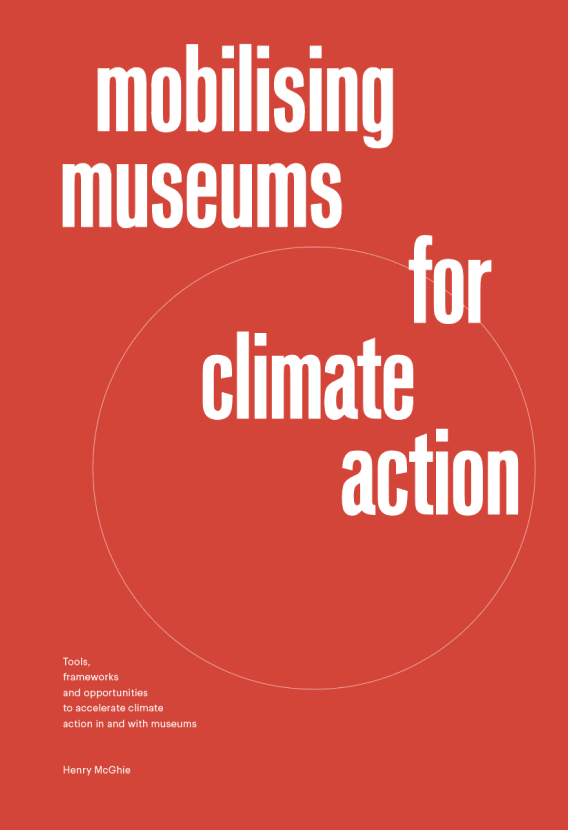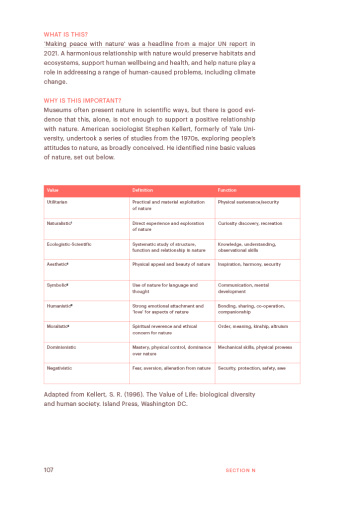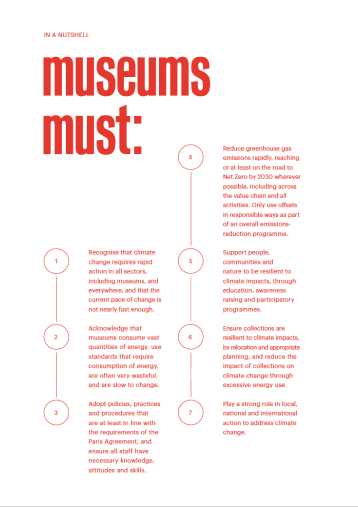Action for Climate Empowerment
( Toolbox )
WHAT IS THIS?
As mentioned earlier, the UNFCCC includes an Article (Article 6) on the importance of public education, training of staff, public access to information, public awareness, public participation and international co-operation on climate change matters. More or less the same content was included in the Paris Agreement (Article 12), although international co-operation was included elsewhere in the Agreement. This is now known as Action for Climate Empowerment, or ACE for short.
WHY IS THIS IMPORTANT?
Action for Climate Empowerment is the clearest connection between the work of museums and the UNFCCC and Paris Agreement, that is, their main opportunity to support the goals of these agendas, in addition to reducing greenhouse gas emissions resulting or related to their activities. Museums are specifically named as key sites for supporting Action for Climate Empowerment, among a range of others, in the Work Programme for the Paris Agreement.
WHAT DOES THIS MEAN FOR MUSEUMS?
Action for Climate Empowerment is made up of six elements, which are recognised as all being essential, and as being of equal importance in climate empowerment.
THE SIX ELEMENTS OF ACTION FOR CLIMATE EMPOWERMENT
| The United Nations says | What does this mean for museums? |
|---|---|
| EDUCATION: Education seeks to achieve profound, long-term changes in understanding, particularly among young people. It involves developing educational curricula, training of trainers and teachers and adequate pedagogies. The results of a successful programme would ultimately be a population whose deep-seated appreciation of the climate challenge leads to greater national action and commitment. | Incorporate education on climate change in programmes wherever possible, using appropriate pedagogies that promote not only knowledge but attitudes and skills to address climate change. Education is not restricted to schools, but is lifelong |
| TRAINING: Training programmes seek to spread specific practical skills that can have an immediate practical application. Examples include the ability to gather and interpret climate data, conduct inventories of national emissions, and identify climate-friendly technologies. Training is about learning by doing – individuals, communities and organisations can all benefit from ongoing learning. | Museums should support workers – their own and others – to address climate change through their work. Creating opportunities for learning by doing, linked to global challenges and local circumstances, empowers people to adapt to climate change and contribute to climate action. Museums can also ensure that their staff are familiar with the aims of the UNFCCC, Paris Agreement, ACE and the SDGs, to embed them into their public-facing activities, and internal operations. |
| PUBLIC AWARENESS: Many governments and nongovernmental organisations (NGOs), intergovernmental organisations and UN agencies have already launched major public awareness programmes. But there remains an enormous unmet need for more outreach. Creating a successful outreach programme that truly changes behaviour involves targeted and systematic communications. | Museums can communicate climate change, its impacts on people and nature, and actions to address climate change to their audiences and across their communication methods. Awareness has to not just focus on problems, but raise awareness of sources of information, support, partnerships, and positive steps being taken to address and adapt to climate change. Museums can raise awareness of climate change, its impacts and climate actions happening elsewhere in the world, using their exhibitions, collections and partnerships as a platform for this. |
| PUBLIC ACCESS TO INFORMATION: Programmes to engage citizens and CSOs in addressing climate change can be improved by ensuring that information is freely available. This is crucial in order to develop and implement effective policies and to engage people actively in implementing these policies. Technologies such as databases and the internet facilitate the provision of climate information, data and statistics to all citizens. | Museums are knowledge-resources, with vast amounts of information contained in and with collections. They can share this information widely, and also empower people to draw on the huge quantities of information available on the internet, to curate their own climate knowledge to support climate action, and for people to share and collectively learn from one another to make informed decisions. Transparent access to information and progress (and inaction) by governments to address climate change, locally, nationally and globally, would help support climate awareness and action. People also need access to information on initiatives they can take part in, on actions they can take, and information on how to take those actions themselves. |
| PUBLIC PARTICIPATION: By ensuring that people can participate effectively in climate change decisionmaking and implement climate mitigation and adaptation activities, governments should seek to integrate civil society perspectives and mobilise the general public. In some places, this will prompt profound changes to how political leaders and civil servants are accustomed to working and encourage people to be more attentive to policy-making. | Public participation goes beyond people consuming information or activities produced by museums. Museums can create opportunities for different sectors, different stakeholders, and the public to interact. This can help develop, shape and deliver more effective policies and related actions. Empowering people to contribute to the development of their community and its transformation is a human right. |
| INTERNATIONAL CO-OPERATION: International cooperation and exchange can play a major role in strengthening ACE efforts. Many governments and relevant stakeholders need access to expertise and financial and technical resources so they can develop their own climate change programmes. All countries can benefit from sharing success stories, exchanging personnel and strengthening institutional capacity. | Museums can support and promote international co-operation, between museums, different sectors, communities, and staff in different countries, to develop joint programmes and create synergies. International co-operation is important for addressing the imbalance between Global North and Global South countries. |
‘The United Nations says’ text taken from Action for Climate Empowerment Guidelines, UNESCO and UNFCCC (2016).
See sections on:
Just transition (section i)
Education for Sustainable Development (section l)
Additional learning approaches (section m)
Towards positive relationships with nature (section n)


